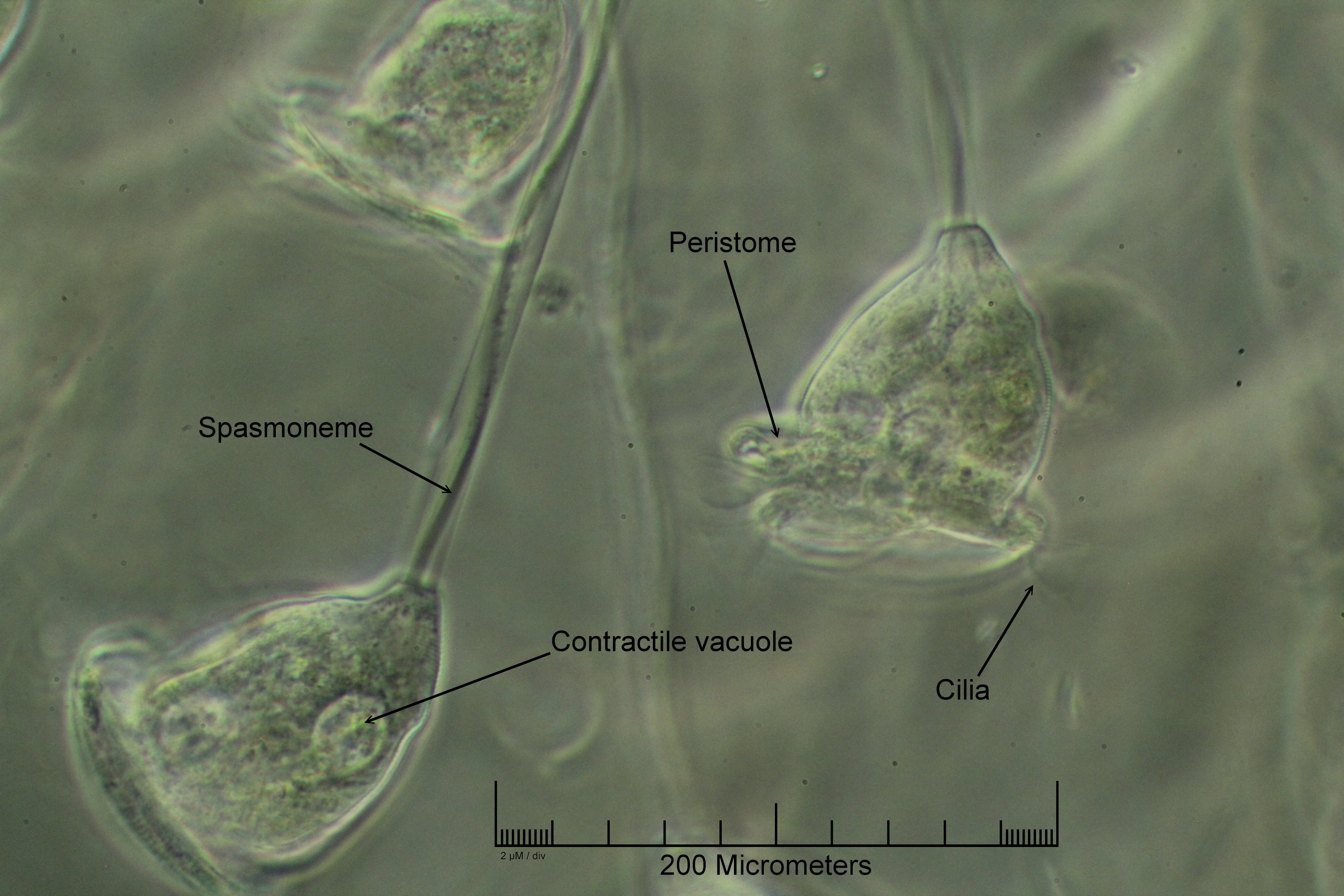Vorticella are ciliate protozoans. They are in the order Peritrichida, which means they only have cilia around the periphery of the mouth (although before they grow a stalk and settle down, they may have swimming cilia in a band around the rear). Within the order Peritrichida, Vorticella is in the suborder Sessilida, meaning they stay attached to a substrate, rather than move around.
In the video (especially if you choose the maximum resolution and view it full screen) you can see the stalk attached to the bell-shaped body. The stalk can very quickly coil up like a spring, pulling the Vorticella back towards the object it is attached to in as little as 5 milliseconds, traveling up to 3 millimeters in that time (0.6 meters per second). Compare that 5 milliseconds to the 100 to 150 milliseconds it takes you to blink your eye.
Vorticella feed on smaller protozoans and algae, and you can see how their cilia create currents in the water that draw particles towards their open mouths. You can see them jump back when they are disturbed, and then gradually return, as the cilia pull them through the water away from the coiled stalk.

Using the 40x objective, we can see internal details of the Vorticella structure. Inside the tubular sheath of the stem, we can see the spiral spasmoneme, the structure that contracts to pull the organism back. We can also make out the cilia around the mouth, and lip lip-like peristome. Adjusting the focus, we can see the contractile vacuole inside the bell-shaped body.
With the 20x objective, we can start to see more structure in the video.
And at 40x, we see still more detail.